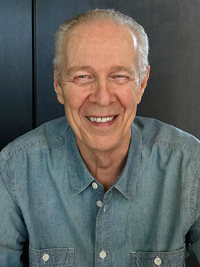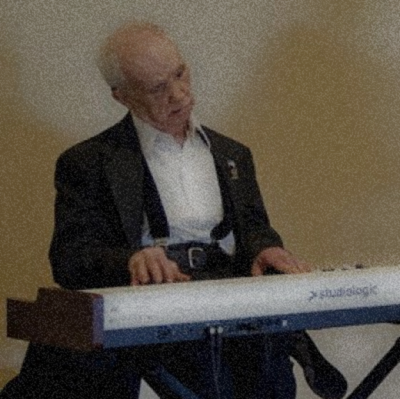Whistlin’ The Bird—Two True Stories
by Bob Hecht
Part 1: Confirmation (1969)
It wouldn’t be the first time my penchant for whistling jazz tunes got me in trouble…nor the last.
I’d been crazy about whistling from my boyhood. Perhaps I inherited my obsession from my late father. He wasn’t a jazz fan like I am, and I barely even remember him whistling—he wasn’t around much when I was a boy and he died when I was twelve—but my mom later told me he was an outstanding whistler. “He could do triple tonguing and everything,” she said.
So maybe it was in my DNA. But at any rate, after his death I determinedly taught myself to whistle. I have a good ear and decent sense of pitch, so I found I could easily get in sync with whatever music I was hearing. And then I practiced and practiced, whistling along with jazz compositions and solos for years until I got pretty good at it.
To this day, I whistle when walking about, when listening to recordings, when driving, when shopping in grocery stores—my wife says she actually finds it helpful, because if we are separated in a store, she can always locate me by the sound of my whistling.
I will whistle in just about every situation except when listening to live music being performed, because that is totally unacceptable by any standards. I once witnessed a hilarious instance of someone doing just that during a live jazz performance—it was a concert by the great alto saxophonist Lee Konitz in a jazz club in northern California. Lee had just gotten partway through the theme of “Body and Soul,” when over the sound of his sax could clearly be heard someone in the audience attempting to whistle along—loudly and off key (naturally). After a few bars of this gross intrusion, Lee just stopped cold. “Oh, I hear someone is trying to join in here,” Lee said caustically. “What do you say we have a whistle-along? Everyone together now?” Lee then put down his horn and for a full chorus of “Body and Soul,” a la Mitch Miller, conducted the entire audience in whistling that classic tune. It was a ragged effort, to be sure, but Lee made his point, and the stunt sufficiently embarrassed the culprit to pipe down for the rest of the concert—and hopefully for life!
Anyway, back in 1969, I was a teacher at a private boys school in Livingston, New Jersey, where my job was to teach English Grammar & Composition to sixth and seventh-grade boys. There was a defined curriculum but when I wasn’t obliged to force upon them the invaluable life skill of sentence diagramming or the ability to recognize a dangling participle when they saw one, I preferred to concentrate on what I believed was much more important—teaching them some basic skills in creative writing.
I was full of young idealism about education, and my main goal was to encourage these rather spoiled, entitled boys to tap into their imaginations and learn to use language to express thoughts and feelings. As a result, we had many very lively and loud discussions about their compositions in the classroom.
There was only one problem—my boss was an iron-fisted martinet of a woman who considered her mission to be more like that of a drill sergeant than a teacher, and she believed that I, too, should be that way. This was Mrs. Lynham, a fearsome, always unsmiling presence, with a shock of pure white hair set off by comically large, jet-black eyebrows.
Unfortunately, her classroom was adjacent to mine, the two rooms separated only by one of those accordion-style folding doors, which was not at all soundproof. There was never so much as a peep emanating from her side of it, because her students were in constant fear for their lives, as speaking uninvited could get a boy struck viciously with a wooden ruler. But in marked contrast, the students in my classroom were encouraged to talk, and the result was often a boisterous and cacophonous atmosphere.
So, at least once a day, the folding door between the two rooms would be violently thrown open, and the furious visage of Mrs. Lynham would glare us. “Quiet!” she would shout. “I can’t teach with all this racket!” If it had been possible to then slam the accordion door, I’m sure she would have.
The boys would then quiet down, momentarily at least. I would smile and wink at them to let them know I was more on their side than hers, and we would carry on, trying to be a little less unruly. After one of these episodes, Mrs. Lynham took me aside between classes to upbraid me about the disruptive behavior of my classes.
“I want to talk to you about the lack of discipline in your classroom,” she said. “I understand what you are trying to do, but the idea of engaging these boys in conversation is completely misguided. You can’t actually talk to them—they will misconstrue everything you say.” And then, leaning in close to me rather conspiratorially, she told me her own personal pedagogical philosophy. “I consider these boys to be sticks that have to be taught!” She made this autocratic pronouncement with a sly smile, and then added: “That’s the approach that has stood me in good stead for many a year, and I strongly advise you do the same thing.”
I was speechless…and appalled. This was the exact antithesis of everything I believed in.
A few days later, “the whistling incident” occurred. Picture this: while escorting my class through the hallways to an event in the auditorium, I’m blowing a jazz tune—one of Charlie Parker’s greatest compositions, “Confirmation”—when out of nowhere comes Mrs. Lynham, fiercely admonishing me.
“Stop that right now,” she commands, as if she were dressing down one of her young charges. “It’s inappropriate to whistle in school—before you know it, they’ll all be doing it!”
I’m sure the old battle-axe feared there might be some sort of mass student rebellion, perhaps like the one perpetrated by British prisoners of war in the late fifties World War II film, The Bridge on the River Kwai. It was those soldiers, you may recall, who bravely risked their lives by disobediently whistling “The Colonel Bogey March” right in the faces of their outraged and humorless Japanese captors.
Except in this case it would’ve instead been a very unlikely kind of bebop whistling anarchy, with legions of young, white, over-privileged boys—the virtual prisoners of war of this school—rearing back, pursing their lips, and blowing “Confirmation” in mad and exhilarating defiance of the established dicta of tradition!
Come to think of it, that would be much as Bird himself had done all those years before, blowing down the walls of traditional jazz conventions with his bebop innovations. And we know from history how devastating a radical rebellion like that can be—presaging the very end of jazz as we knew it.
Part 2: Billie’s Bounce (1971)
It’s just another day working on the assembly line…
Recently, when a photography gig of mine ended, I had to find occasional manual labor for some much-needed cash to pay the rent. So for a while I’ve been on call as a day laborer at the Heublein factory in Menlo Park, California. The job is tedious and mindless—it consists of loading cases of booze onto a conveyor belt, hour after hour. (There’s also a bizarre bit of déjà vu involved, as Heublein makes a cheap rye whiskey under the brand name of Carstairs, a brand my alcoholic parents used to drink in large quantities when I was a kid, and it is mostly cases of that very same whiskey that I am now loading onto the conveyor belt.)
To stay sane, as I work I blow some jazz. I pretty much always have music ‘playing’ in my head, and if I’m in a place where it won’t disturb anyone, it comes out as whistling.
Today, I’m concentrating on one particular jazz piece. I have learned Charlie Parker’s solo on his famous blues “Billie’s Bounce,” and I keep whistling it over and over. Bird’s four-chorus solo is a wonder, one of the most perfect blues solos ever recorded. I can pretty much get it note for note, except for a couple of bars of blazingly fast sixteenth notes, which I usually fumble my way through somewhat pathetically.
It helps me a lot to focus on music while I perform this drudgery, to occupy my mind with something more uplifting. But today I can’t help but notice a black co-worker at the other end of the conveyor belt who keeps giving me the stank eye…maybe he doesn’t like my whistling? His job is to control the conveyor belt’s speed to make sure things don’t get too out of control (picture Lucy and Ethel at the candy factory).
Hecht, 1971
I’ve seen this guy before, he is a regular employee at Heublein, and he is wearing the Black Panther regalia of the day—black shirt and pants, black beret with a Panthers button on it, and a serious Afro.
I, too, am sporting a ‘fro,’ although mine is light brown, and is not intended as a political statement—it’s just that I’m a curly-haired jazz freak, and it’s 1971 in California. But “conveyor-belt man” keeps giving me these strange looks, and I begin to seriously wonder what exactly is up with him. I try my best to ignore the guy and keep on working, and whistling…
Then, during a break, he approaches me, gives me a hard once-over and says, “You’re passin,’ right?”
“Say what?” I reply.
“Like, you’re PASSIN,’ right? Passin’ for white!”
I am taken aback. He actually thinks I’m black and pretending to be white? Is he serious? I guess maybe it’s the ‘fro’ and the Bird solos that have him so confused…
“No, man,” I say, laughing. “I am most definitely white! Always have been, always will be.”
“Don’t bullshit me,” he says. “I hear you whistling those blues, and I see that hair. That’s some kinky shit right there.”
“I know it is,” I say, and try to make a joke to lighten the confrontational mood, “I think it got this curly from listening to so much jazz!”
At least he smiles a little at this, so I quickly add, “Believe me, man, I am NOT passing! And if I was trying to fool people, do you really think I’d be having my hair like this and whistling jazz all the time?”
He looks me hard in the eye for a long moment, and I can tell he sees now that I am telling the truth—so I know we are going to be okay. We smile at each other, clasp hands in a “power” handshake, and go back to work.
Resuming my job of loading those endless cases, I have to smile, thinking about this unusual exchange. And then I silently congratulate myself—“Damn, man! Your whistling must be getting really good!”
_____

Bob Hecht is an award-winning jazz disc jockey and fine art photographer whose photo work has been published in LensWork, Black & White, Zyzzyva and The Sun and exhibited internationally. His writing has previously appeared in LensWork and in the haiku journals Frogpond, Bottle Rockets and Modern Haiku. He and his wife live in Portland, Oregon. For twenty-five years they have been partners in On Point Productions, writing and producing marketing and training video programs. Visit his website by clicking here.
*
Have a memorable jazz story you would like to share? Submit it for consideration at [email protected]
_____







































